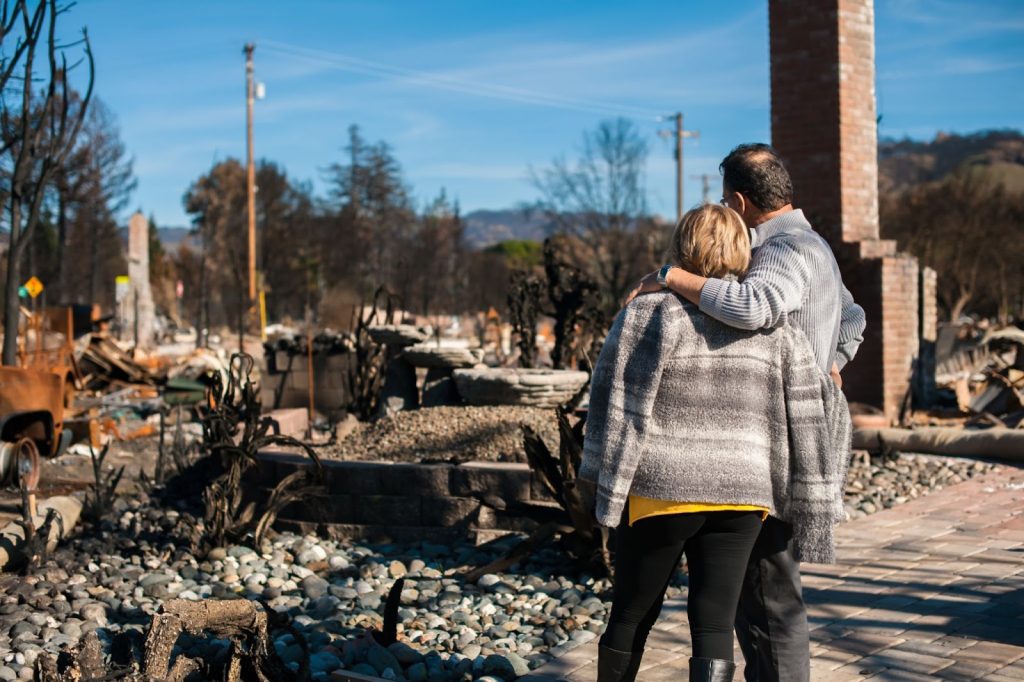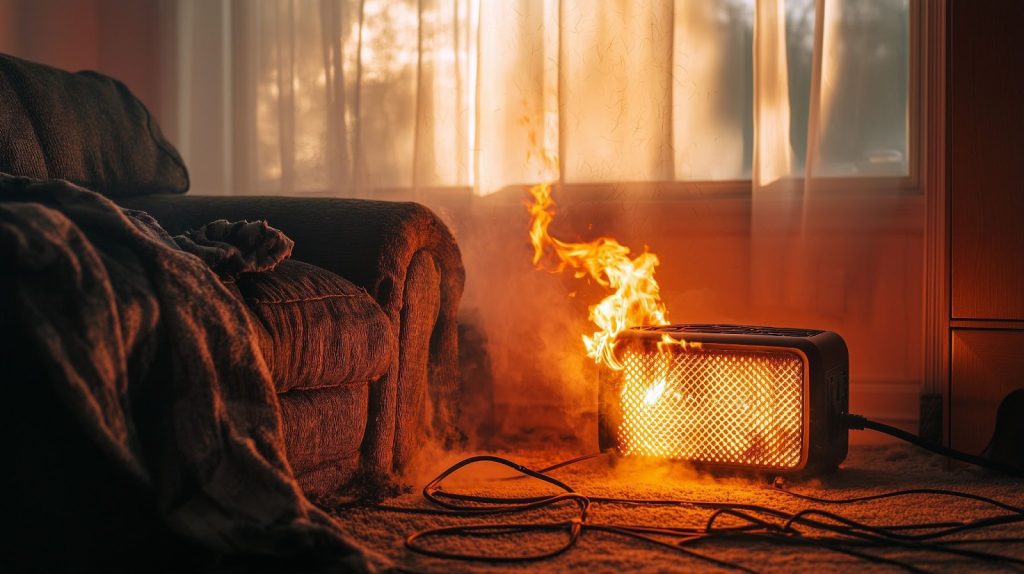7 Fire Damage Restoration Tips for Homeowners
Experiencing a house fire is overwhelming, from the shock of the event to the stress of what comes next. Once the flames are out and your family is safe, you face the difficult task of restoring your home and belongings.
Knowing where to start can feel impossible, but having a clear, step-by-step plan makes the process more manageable.
In this blog, we’ll share seven essential fire damage restoration tips for homeowners. These tips will help you take the right actions, avoid costly mistakes, and recover as quickly and safely as possible.
Whether you’re in the early hours of recovery or planning to prevent a potential house fire, this guide full of fire damage restoration tips will give you the clarity and confidence to move forward.
1) Ensure the property is safe before entering
After a fire, it’s natural to want to check the damage right away — but safety comes first. Fires have the potential to weaken your home’s structure, damage wiring, and leave behind toxic air. Always wait for clearance from fire officials before going inside.
Once it’s safe, wear protective gear like gloves, a mask, and sturdy boots, and use a flashlight to spot hazards like loose nails or sagging floors.
Enter carefully, limit your time inside, and avoid disturbing debris. Ensuring your home is safe to enter is the first — and most important — step in the fire damage restoration process.
2) Contact your insurance company immediately
Your next step is to notify your insurance company. Most policies require quick notice of any loss; delays could slow your claim or risk denial. You don’t need every detail upfront, but give a general overview of the damage and start documenting with photos and notes as soon as possible.
Your insurer will assign an adjuster and explain what’s covered, including temporary housing and emergency repairs. Keep records of all communication and save receipts for anything you buy related to the fire. Reaching out quickly helps protect your rights and speeds up the recovery process.

3) Secure the property to prevent further damage
Once the fire is out and it’s safe to return, it’s important to secure your property to avoid further damage. Fires often leave homes exposed — broken windows, damaged roofs, and compromised doors invite weather damage, pests, or even theft.
Board up all broken windows and doors, and cover holes in the roof or walls with heavy-duty tarps to keep out rain and debris. Also, make sure all utilities — electricity, gas, and water — are safely shut off to prevent leaks, sparks, or other hazards.
If you’re not staying in the home, lock all accessible entry points and consider installing temporary fencing or security cameras to monitor the property.
These steps help preserve what’s left, reduce secondary damage, and show your insurance provider that you’re taking responsible action to protect your home. It’s a small but critical part of the fire damage restoration process.
4) Carefully begin cleanup and debris removal
Once your property is secure and your claim is underway, it’s time to start cleanup with proper precautions. Fire damage often includes hazardous materials like soot, ash, and water-soaked debris. Wear protective gear, including gloves, a mask, and eye protection.
Clear loose debris and damaged belongings carefully, but avoid touching structural areas or anything that looks unstable. Sort items into what can be salvaged and what should be discarded, especially anything contaminated by smoke or water.
For extensive damage, consider hiring a licensed fire damage restoration company. They have the tools and training to clean safely and thoroughly. Starting cleanup carefully protects your health, your home, and your insurance claim.
5) Address water and mold damage early
Water damage is one of a fire’s most overlooked side effects, but can quickly become one of the most destructive. Firefighting often leaves soaked walls, ceilings, floors, and insulation behind. If that moisture isn’t removed quickly, it may lead to mold growth within 24 to 48 hours.
Start by airing out the property as soon as it’s safe. Open windows and doors, and use fans and dehumidifiers to begin drying affected areas. Remove wet furniture, carpet, and materials that can trap moisture. Be on the lookout for early signs of mold, such as a musty odor, discoloration, or fuzzy patches on walls and surfaces.
Because water seeps into hidden spaces, consider bringing in a professional restoration team to perform a moisture inspection and properly dry and disinfect affected areas. Mold damages your home further and creates serious health issues, especially for those with allergies or respiratory conditions.
6) Don’t ignore smoke and soot damage
Smoke and soot may not look as serious as flames or water damage, but they may cause lasting harm if not properly addressed.
Smoke particles have the potential to travel deep into walls, vents, and porous materials, leaving strong odors and chemical residue behind. Soot, which is the black powdery substance left after a fire, stains surfaces, corrodes electronics, and damages household materials over time.
Even if surfaces appear only lightly damaged, lingering smoke and soot can cause deterioration, especially to metals, plastics, fabrics, and paint. Inhaling these particles can also pose health risks, particularly for children, pets, and those with respiratory issues.
Start by ventilating the space — open windows and doors to improve air circulation. Avoid wiping soot with a damp cloth, which may smear it and worsen the stain. Instead, consult a fire restoration professional with the proper tools and cleaners to safely remove residue and neutralize odors.
Addressing smoke and soot damage early prevents long-term effects and makes your home safer and more livable during the restoration process. It’s a critical step that shouldn’t be skipped.
7) Create a detailed inventory of damaged items
A clear, detailed inventory of your damaged belongings is essential for a smooth and fair insurance claim.
Start by going room by room and documenting every item affected by the fire. Take photos or videos and include key details like brand names, model numbers, purchase dates, estimated value, and the condition of each item before the fire. Be as specific as possible — details matter when it comes to claim approvals.
Remember to check drawers, closets, and storage areas. Smaller items like clothing, kitchenware, tools, and electronics add up quickly and should be included. If you have receipts, warranty cards, or old photos of these items, gather them to help support your claim.
This inventory gives your insurance company or public adjuster a complete picture of your losses and helps ensure you’re compensated fairly. The more organized and thorough your list, the faster and more accurate your settlement is likely to be.

Call Hudson Douglas Public Adjusters today
Don’t face the insurance process alone if you’ve experienced a house fire. Contact Hudson Douglas Public Adjusters for expert help from a licensed, independent insurance adjuster who works for you, not the insurance company.
We’ll assess your fire-damaged property thoroughly, document every detail, and fight to make sure your claim is valued fairly. Our goal is to maximize your settlement and take the stress off your shoulders so you can focus on rebuilding.
Reach out to Hudson Douglas Public Adjusters today, and let us protect your interests every step of the way.


